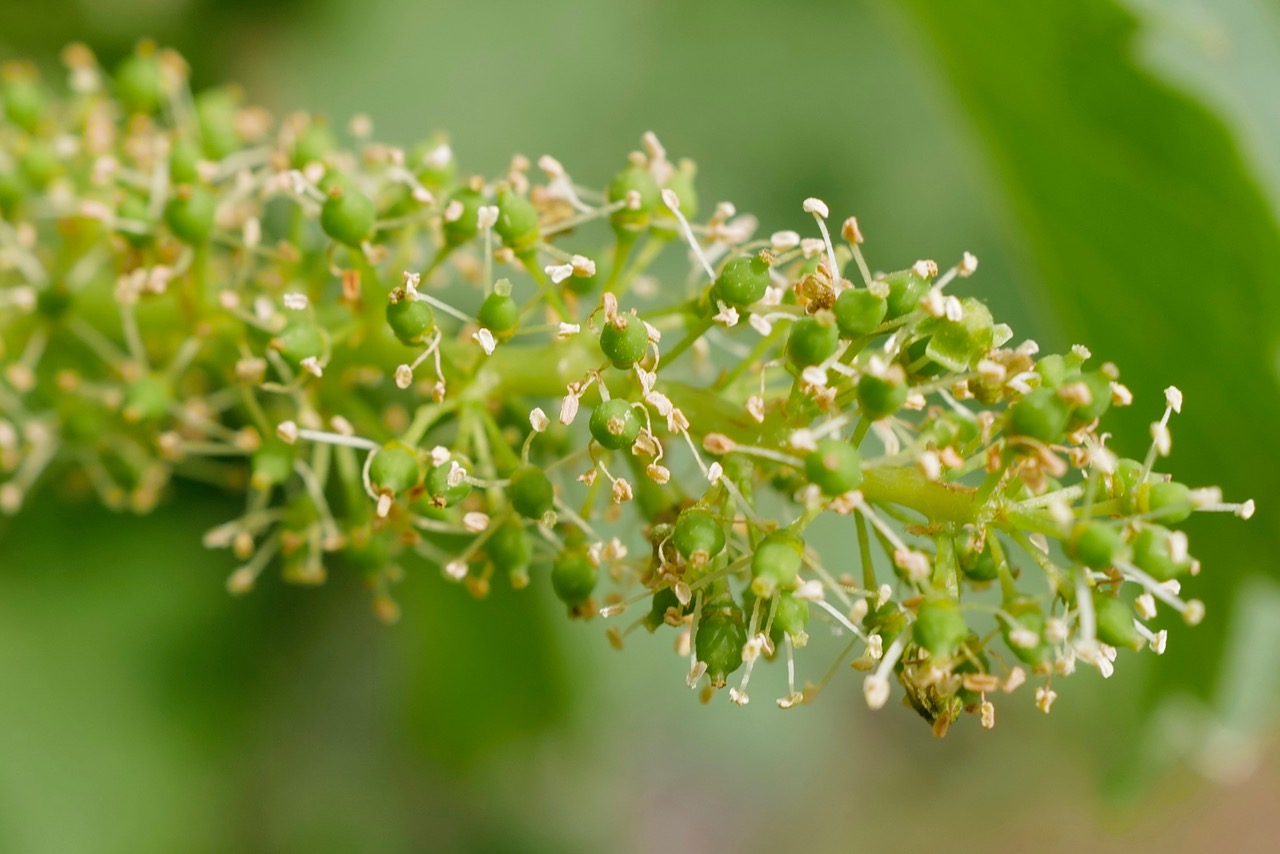Jefferson Vineyards Wine Blog
In the Vineyard: Verasion
In early July, we begin to see verasion in our vineyards. Verasion is a part of the grapes’ ripening process in which they change color and sweeten. Red wine varieties change from green to red, while white grape varieties, already a bright green, become more translucent. During this process, the plants stop growing new shoots and, instead, put their energy into fruit production. Once the fruit change colors, the remainder of the ripening process takes anywhere from 30-70 days until the grapes are ready to be harvested to make wine. We see the first signs of verasion in our Pinot Gris vines. Our team will begin netting the vineyard, to protect the sweetening fruit against birds, deer, and everything else.
In the Vineyard - Fruit Setting & Vineyard Management

Our Chardonnay, Pinot Gris, and Riesling vines are in the “pea berry stage”, while our red varieties, alongside Viognier and Petit Manseng, trail about a week behind. In the past weeks, flower blooms have become fruit, a process that commences only after the flowers have been pollinated and the fruit has set. While early grapes develop, our team busies themselves cleaning trunks, shoot positioning, shoot thinning, and leaf pulling. Trunk cleaning, shoot positioning and shoot thinning address how the vines grow - (in order) removing sucker shoots from the trunk, arranging desired shoots into neat vertical positions, and removing extra shoots to promote airflow and reduce crop load to ideal numbers. With leaf pulling, or canopy management, we remove additional leaves in the fruiting zone to better expose the fruit to the sun. This practice helps to control how much energy the vines are pulling into the fruit versus the leaves and encourages additional airflow to protect the fruit against mold and mildew. These tasks keep our team busy for the whole of June and July when, with early signs of verasion, we will begin netting the vineyard.

In the Vineyard: Flowering

Spring has arrived in full. Now that the threat of frost has passed, a season of spectacular growth has begun. In Mid-April, dormant vines first burst into life during bud break. Now the grapevines enter the critical flowering phase. Miniature green spheres which house the pollen-carrying parts of the flower called “calyptras”, or “caps” develop underneath a wild canopy of new leaves. At the vine’s discretion, these caps open to reveal a minimalist flower - just a pistil and pollen-carrying stamen. Slowly but surely, the pistil is pollinated and each flower transforms into a tiny green berry which itself becomes fruit - the makings of a wonderful harvest.

In the Vineyard: February Pruning

Hector Guzman and his family meticulously care for our vines each season. The Guzmans returned from Mexico earlier in February. Immediately, they began the final pruning in our Cabernet Franc vines. In this process, our team cuts back the canes from years prior, leaving only two or three buds closest to the cordon (the horizontal 'arms of the vines) that will best grow shoots. Our team typically prunes Cabernet Franc and other varietals before beginning work on early budding varietals, like Chardonnay. Such varietals are at greater risk of bud damage from late frosts. By pruning these vines last we delay bud break, better protecting them from early spring frosts.
Once the threat of frost has passed, the team will again return to the vines and remove all but the healthiest shoots from a single spur to improve air circulation in the vineyards.
In the Vineyard: Rough Pruning
Throughout the year, our team works tirelessly to maintain and manage the vineyards in an effort to produce the best possible fruit. With each season, the focus of this care changes.
Were you to take a close look at our vines, you would see the trunk of each vine splits into two horizontal arms that grow along the trellis. Each of these arms is called a 'cordon' and on these cordons are 'spurs', small stubs containing 1-3 buds, that grow upwards and will eventually bear fruit. Since the beginning of December, our team has been rough pruning in the vineyard. Rough pruning is the process of trimming back the shoots of spur-pruned vines to about 12 to 15 inches above the cordon. This serves to expedite the final pruning process, by detangling and 'tidying' the vines our team can delay the final pruning and bud break, better protecting the vines from winter damage and spring frost.
Next week, we being the final pruning process!


